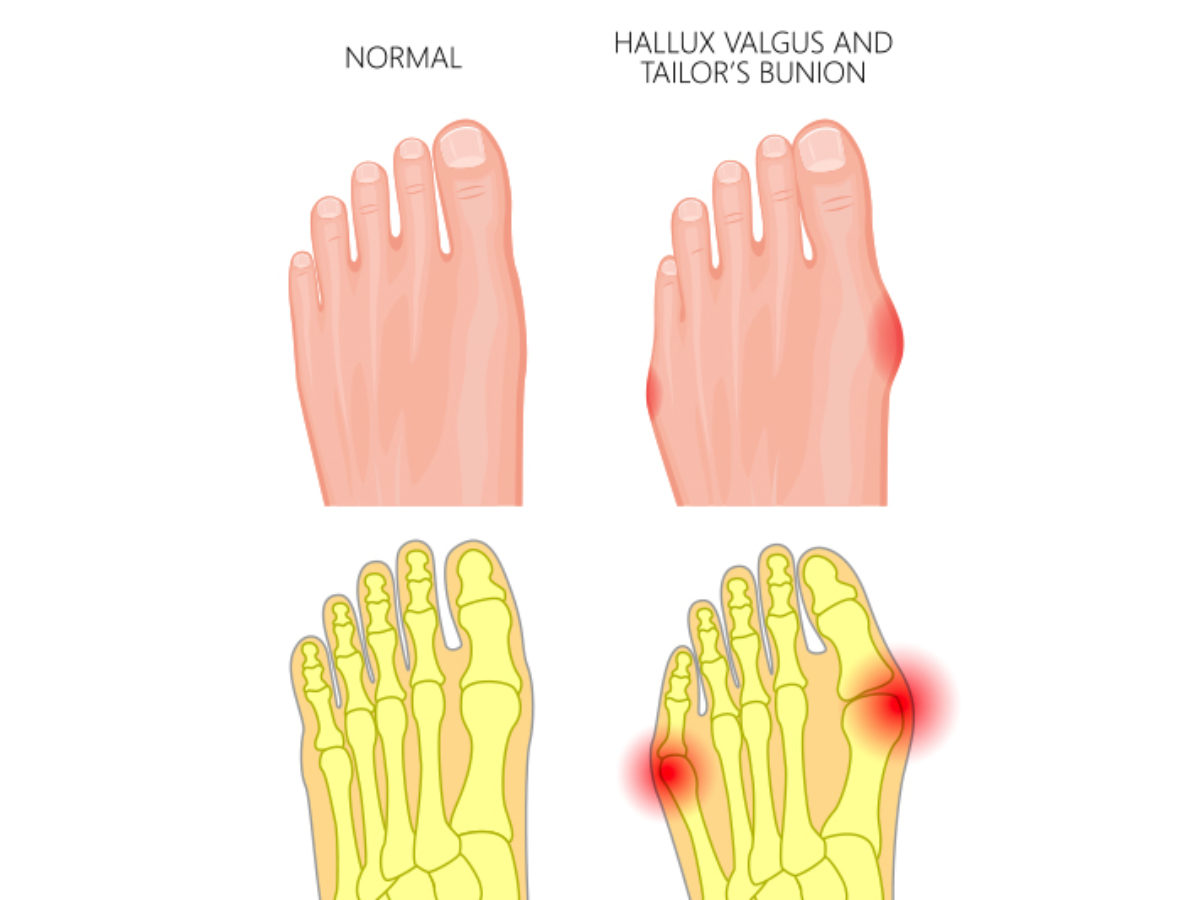
Bunions
What are?
Bunions are a deformity in the toes, in which their alignment changes and begins to deviate towards the other toes. This deviation results in a bony formation - a bump - on the side of the foot, where the toe joins the foot. This area can become inflamed and cause pain.
This defect disturbs the correct alignment of the fingers and, in some cases, the pressure exerted by the big toe can lead to deformation of the joint of the second finger, which in turn “pushes” the third finger and so on.
Bunions tend to progress slowly and worsen over time and are one of the most common foot deformities and, although anyone can develop them, they are more common among women. The higher prevalence in females is possibly due to the preference for tighter and narrower footwear and the fact that their ligaments are “looser”.
Bunions are the most common pathology in adult feet, with 30% of the population having some degree of deformity. It is 10 times more common in females than in males. In women, the use of high-heeled shoes and "pointed toes" contributes as an important extrinsic (external) factor in worsening the deformity and complaints of pain.

Types of Bunions
- Hallux valgus
Hallux valgus is the type of bunion that affects the first toe or “big toe” of the foot, which is the most common deformity (most common type of bunion).
The scientific name for this type of bunion is hallux valgus, a designation proposed by Carl Heuter in 1870. “Hallux” is the term, in Latin, which means “big toe” (1st toe), and “valgus” is the position that this takes place in relation to the longitudinal axis of the body, that is, moving away from the axis of the body.
In the foot with a bunion there is a localized area of prominence on the inside of the joint (metatarsophalangeal) at the base of the 1st toe. The widening actually represents a misalignment of the joint (metatarsophalangeal) and, in some cases, additional bone formation. This deviation causes the first toe, popularly known as the “big toe” of the foot, to point outwards and rotate (hallux called abductus with valgus deformity) towards the smaller toes.

- Sastre Bunion or Bunionette
Bunion that affects the fifth finger or little finger, popularly known as “little finger, little finger or little toe” is the Bunionett or Joanete Sastre , also known as tailor's bunion due to the prevalence of this type of bunion in this profession (due to the use of sewing machines).
The deformity at the level of the 5th toe is a less common form of bunion than the one that affects the 1st toe (hallux valgus). This deformity is located at the level of the joint at the base of the fifth toe with varus deviation of the little toe, which is angled towards the inner side of the foot.

Symptoms:
- Pain
- Inflammation and redness
- Burning sensation
- Calluses
- Numbness
Diagnosis
Simple observation allows you to check for bunions. However, to assess its severity and degree of deformation, the specialist may use x-rays.
Treatment
Given the existence of bunions, there are several possible scenarios: some people have large deformities that do not cause pain, but cause difficulties with footwear, while others have small bunions, but which are very painful. Treatment will depend on these characteristics.
The specialist - for example, a podiatrist - can recommend some strategies that, although they do not correct the deformation, alleviate the symptoms and prevent their exacerbation, such as:
- Ice
- Use of orthoses
- Dupligel - Bunion Separator and Protector
- Dupligel - 5th finger
- 5th toe bunion protector
- Bunion Protector and Corrector
- Choose suitable, comfortable footwear, preferably low and wider at the front, to avoid friction
- Surgery
